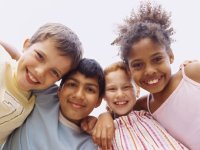Bullying Prevention: Students Share Dos and Don’ts
Stan Davis has devoted a long career to the well-being of youth, in particular their empowerment through voice and their safety and dignity through bullying prevention. With Charisse L. Nixon, Davis recently published a study of 13,177 students in fifth through twelfth grades from 31 schools and in 12 states, focusing on giving students a chance to speak about school connection, peer mistreatment, and student and adult actions.
The Findings
Writing in the report of their work, Youth Voice Project: Student Insights into Bullying and Peer Mistreatment, they state:
"We are concerned that too much work in this field has focused on adults telling youth what bullying is and what to do to address bullying behavior. In reality, youth are the primary experts on what is happening at school and on what works best to prevent peer maltreatment....We see authentic youth involvement as key to success in bullying prevention."
Lessons learned from surveying the students can be summarized in the following don'ts and dos:
Don'ts:
#1: Don't try to help youth differentiate between "tattling" and "telling." They key is to have trusting relationships between adults and youth and that means expressing their concerns about what their peers are doing.
#2: Don't imply that a mistreated youth "has it coming" to him or her. No one "deserves" to be bullied or harassed, regardless of their provocations.
#3: Don't overuse the term, "bullying." There are many peer misbehaviors that may not conform to the formal definition of bullying but still have no place in schools. Actions that harm, or potentially harm, others should be the targets, not finding the "bullies."
Dos:
#1: Work collaborative with students to build clear definitions of respectful behavior and respond promptly and consistently, with care and concern, when respectful behavior is not shown.
#2: Encourage youth to reflect on their own behavior and how it relates to their personal aspirations and the school's code of conduct or core values. Students perceive this as showing them considerable trust.
#3: Place a high priority on activities that connect students with one another and school staff, including adviser-advisee times, advisory periods and class meetings, cross-age, interest-based activities in and after school, and meaningful service projects.
#4: Adults must communicate "unconditional positive regard to all students" (p. 142) without exception or hesitation. Students must believe that the adults in the school believe in them and their potential to achieve in the classroom and in life.
#5: All students should be taught "the cognitive skills of social problem solving so they can try different solutions instead of giving up when they experience failure" (p. 142). These skills have the potential to support alternatives to bullying, considering consequences before cyberbullying, determining how to be an upstander, and how to respond with determination if one is victimized or threatened. Social problem solving skills also help youth to evaluate what is said about them and better equip them to "choose how they feel about themselves" (p. 143).
#6: Youth want to see adults respond proactively (i.e., actively discourage hurtful speech and actions), promptly when an incident is reported, and to follow up afterwards. They want to see enduring caring.
Even if the Glass is Half Full, It Needs Filling Up
Looking at general trends across a large number of youth leads to three observations that must be viewed with great caution:
First, the data at times are not "so bad." Fifty-five percent of students who are mistreated because of sexual orientation feel that adults listen to them; 42 percent of the time, they maintain ongoing supervision for a meaningful period of time -- more than happens for other kinds of mistreatment (37 percent). There are many finding like this and one can be tempted to think things are not as dire as one might have predicted. However, why the figures are not 90 percent or more is the real question. Every child deserves to be heard and supported after an incident, whether for reasons of sexual orientation, physical disability, special education status, etc.
Second, students receiving special education services are mistreated by peers more often than their peers and feel noticeably more supported by adults (though not by peers) than other students who are mistreated. While this seems like good news, it is very likely a consequence of social exclusion. These students tend to have a narrower range of contacts with adults than most other student groups, but do feel supported by those adults they do see. On the other hand, their school day will often bring them into contact with a wide range of peers, often without inclusive supports, and those contacts tend to be unsupportive.
Third, general trends mean little in the context of specific schools. Each school must gather and analyze data on incidents of mistreatment and victimization, and tap student voice and involvement and student and staff perception of climate, using anonymous surveys that allow for disaggregation of data while protecting confidentiality. Many schools would find the surveys in Youth Voice to be helpful, at least as starting points for gathering information.
Next Steps
The action implications of these findings, as well as some of the dos noted earlier, are to promote a genuine and broad sense of inclusiveness by educating for true understanding of diversity, especially as manifest in one's own school, to ensure that school codes of conduct and core values are integrated into everyday routines, including opportunities for student reflection and feedback on student report cards (versus being relegated to statements in handbooks or on web sites), and to require that all students are given systematic training in social problem solving or related social-emotional skills and encouraged specifically to use those skills in finding alternatives to mistreating others, seeking help effectively, and upstanding in the presence of injustice and inequity.
What are your thoughts and ideas about this post? Please share in the comments section below.
